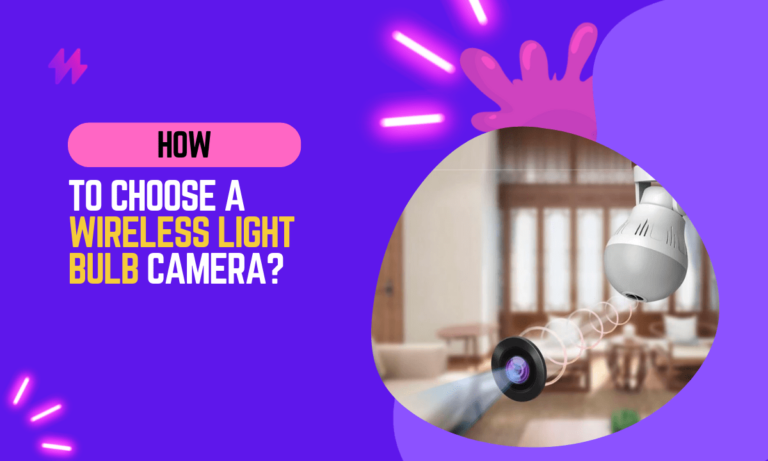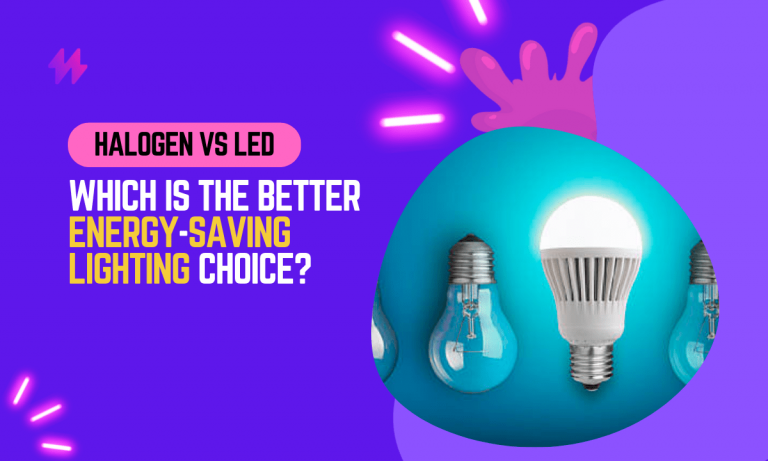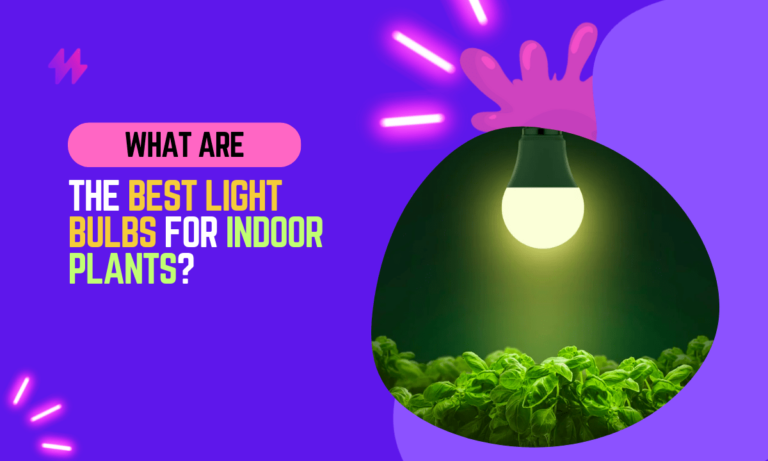60 Watt LED Light Bulbs: Everything You Need to Know
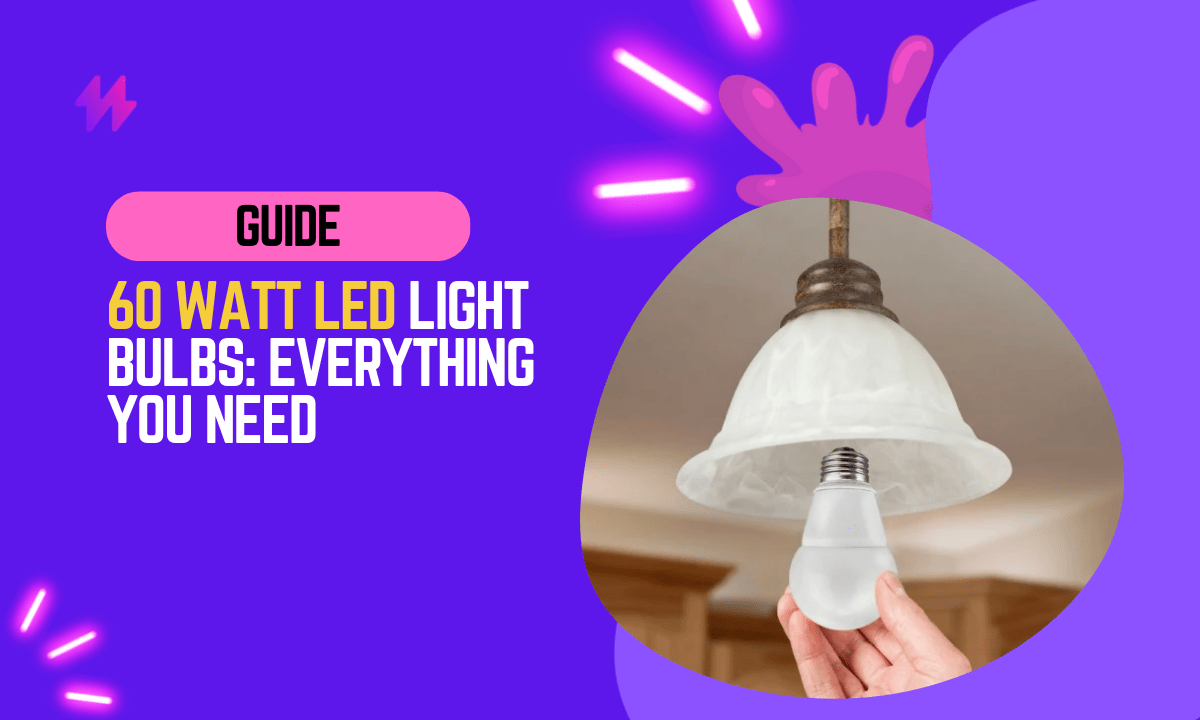
Have you ever had a problem with your 60-watt LED light bulbs? Maybe they’re not turning on, or they’re flickering. If so, you’re not alone. LED lights are a relatively new technology, and there are still a few kinks to work out.
If you’re having problems with your 60 watt led light bulbs, don’t despair. There is a solution to your problem.
In this article, I’ll talk about some of the common problems with 60 watt LED light bulbs and how to fix them. I’ll also share some tips on how to choose the right LED lights for your home.
I’ve been working as an LED Light Technician for many years, and I’ve dealt with a lot of problems with LED lights. But I’ve also learned a lot about how to fix them.
So, if you’re ready to get your LED lights working again, read on!
When it comes to addressing issues with your 60-watt LED light bulbs, understanding their technology is crucial. Choosing the right light sources, such as smart bulbs, can greatly enhance your home’s energy efficiency and reduce electricity consumption.
Everything You Need to Know About 60 Watt LED Light Bulbs: Understanding LED Bulbs and Bulb Wattage

60 watt LED light bulbs are a type of light bulb that uses light-emitting diodes (LEDs) to produce light. LEDs are more efficient than traditional incandescent light bulbs, and they can last up to 25 times longer. This makes them a more economical choice for lighting your home or office.
LED lighting has revolutionized the way we illuminate our spaces, offering various advantages over older-style light bulbs. With 60-watt LED light bulbs providing both efficiency and longevity, opting for energy-saving bulbs is a step toward a sustainable future, contributing to a cleaner environment.
60 Watt LED Light Bulbs: Everything You Need to Know About Their Value
Yes, 60-watt LED light bulbs are worth it. They are more efficient than traditional incandescent light bulbs, and they can last up to 25 times longer. This means that you will save money on your energy bills in the long run. Additionally, LEDs produce a more natural light that is easier on your eyes.
Opting for 60-watt LED light bulbs can significantly improve your home’s illumination by providing a consistent and high-quality light that surpasses traditional incandescent options. Not only do these energy-saving LEDs contribute to lower electricity bills, but they also support clean energy initiatives, making them a smart choice for eco-conscious consumers.
Exploring the Benefits of Using 60 Watt LED Light Bulbs: A Comprehensive Guide
There are many benefits to using 60 watt LED light bulbs, including:
Using 60-watt LED light bulbs is a sustainable choice that not only lowers electricity costs but also assists in meeting energy efficiency standards. As more consumers switch to modern lighting sources like mini LEDs and energy-star rated bulbs, they can enjoy the benefits of brighter and more attractive lighting for their homes.
- Energy efficiency: LEDs are much more energy efficient than traditional incandescent light bulbs. This means that you can save money on your energy bills by switching to LEDs.
- Long lifespan: LEDs can last up to 25 times longer than traditional incandescent light bulbs. This means that you will need to replace them less often, which can save you money in the long run.
- Natural light: LEDs produce a more natural light that is easier on your eyes. This can help to reduce eye strain and headaches.
- No mercury: LEDs do not contain mercury, which is a toxic metal. This makes them a safer choice for your home or office.
Drawbacks of 60 Watt LED Light Bulbs: What You Need to Know
There are a few drawbacks to using 60-watt LED light bulbs, including:
There are a few drawbacks to using 60-watt LED light bulbs, including the initial cost and compatibility issues with certain fixtures. Despite these concerns, it’s important to consider that LEDs typically have a much longer lifespan compared to incandescent lightbulbs and fluorescent bulbs, making them a more sustainable choice over time.
- Initial cost: LEDs can be more expensive than traditional incandescent light bulbs. However, the long lifespan of LEDs means that you will save money in the long run.
- Color temperature: The color temperature of LEDs can vary. Some LEDs produce a cool white light, while others produce a warm white light. It is important to choose the right color temperature for your application.
- Dimming: Some LEDs cannot be dimmed. It is important to check the specifications of the LED light bulb before you purchase it to make sure that it can be dimmed.
Selecting the Perfect 60 Watt LED Light Bulbs: A Comprehensive Guide
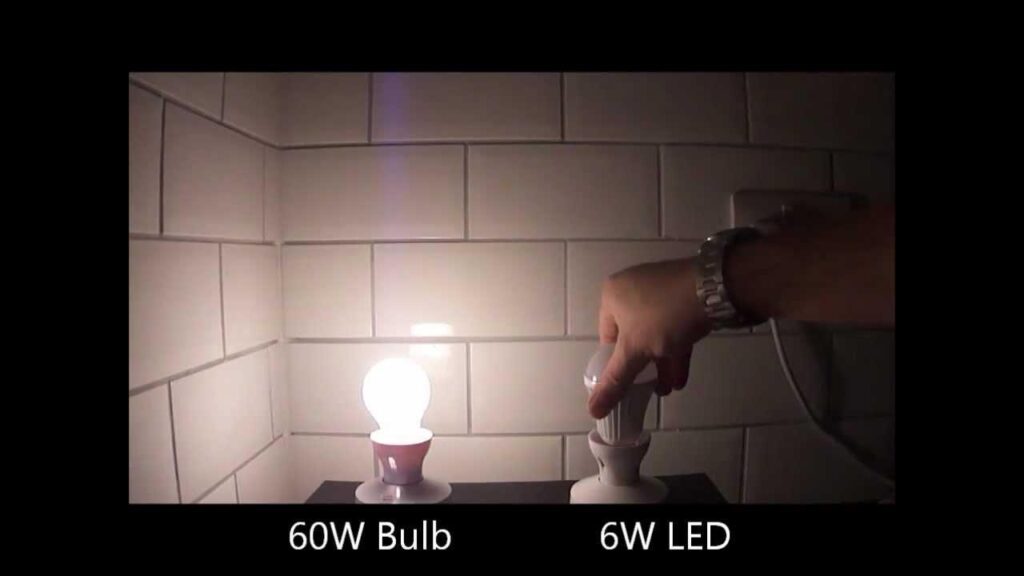
When choosing a 60-watt LED light bulb, there are a few things you need to consider, including:
- Lumens: The lumens rating of a light bulb indicates how much light it produces. The higher the lumens rating, the brighter the light bulb will be.
- Color temperature: The color temperature of a light bulb is measured in Kelvin (K). The higher the Kelvin rating, the cooler the light will be.
- Dimmable: Some LEDs can be dimmed, while others cannot. It is important to check the specifications of the LED light bulb before you purchase it to make sure that it can be dimmed.
Also read: How to Choose a Wireless Light Bulb Camera?
When choosing a 60-watt LED light bulb, it’s important to understand different lamp types and their bulb wattage to make an informed decision. You may also want to explore the benefits of energy star rated LED bulbs, as they offer both high efficiency and a brighter light compared to traditional incandescent technology.
Final Thoughts on 60 Watt LED Light Bulbs
In conclusion, 60-watt LED light bulbs represent a significant advancement in lighting technology, offering a sustainable and efficient alternative to traditional incandescent bulbs. Understanding the full spectrum of benefits associated with these LEDs is crucial for both consumers and businesses looking to make informed choices about their lighting solutions. These bulbs are not only more energy-efficient, using up to 75% less energy than incandescent bulbs, but they also boast a longer lifespan, often lasting up to 25 times longer. This makes them an economical choice over time, reducing both replacement costs and maintenance efforts. Furthermore, the quality of light provided by 60-watt LEDs is superior in terms of brightness and color accuracy, which can enhance the visual appeal of any space while also contributing to a reduction in energy consumption.
Moreover, the versatility of 60-watt LED bulbs means they can be used in a variety of settings, from residential to commercial spaces, without sacrificing performance. They are available in different color temperatures, allowing customization according to specific needs or preferences, whether it’s a warm yellow light for cozy living areas or a bright white light for workspaces. Additionally, many LED bulbs are now dimmable, providing further flexibility in controlling lighting levels to suit different times of the day or specific activities. As we continue to move towards more environmentally friendly solutions, the role of LEDs, particularly the 60-watt variety, becomes increasingly important not just in terms of individual benefits but also in contributing to broader energy conservation efforts. Thus, the shift towards LED technology, particularly for those still using older lighting methods, offers not only improved efficiency and cost-effectiveness but also a tangible step forward in reducing our environmental footprint.
60 Watt LED Light Bulbs: Everything You Need To Know | Key Features of 60 Watt LED Light Bulbs
Understanding the key features of 60 Watt LED Light Bulbs: Everything You Need to Know is essential for making informed lighting choices. These bulbs offer significant energy efficiency compared to their incandescent counterparts, such as the 60-watt incandescent or 100-watt incandescent bulbs, providing the same light intensity while consuming substantially less electric current. Lighting engineers often recommend LED lightbulbs for their longevity and reduced wattage consumption, especially in applications like downlights and floodlights. Brands like Philips and Cree lighting bulbs exemplify the advancements in luminous technology, ensuring that consumers can enjoy bright lights and warm light or cool light options suited for various environments. With a commitment to 100% renewable energy, modern designs prioritize efficiency standards set by the Energy Star system, making them ideal replacements for inefficient light bulbs and faulty fluorescent tubes. Selecting the right light bulbs not only enhances ambiance but also supports clean energy initiatives, contributing to a well-lit household while maintaining lower overall electricity use.
60 Watt LED Light Bulbs: Everything You Need to Know | Energy Efficiency and Cost Savings
The transition to 60 Watt LED light bulbs represents a significant advancement in energy efficiency and cost savings for homeowners. These luminous bulbs offer the same light output as traditional 40-watt incandescent bulbs while consuming far less electricity. The American Lighting Association highlights how using LED lamps reduces overall energy consumption and contributes to lower electricity bills. By replacing high wattage bulbs or multiple bulbs in various fixtures, such as floor lamps or under lampshades, significant long-term savings can be achieved. This shift toward cleaner energy sources aligns with the clean energy fact that consumers are prioritizing energy-efficient products.
Consumers will find that modern LED bulbs come in various color temperatures, allowing for customization in ambiance from a warm candlelight-type glow to a daylight feel. These bulbs can easily replace incandescent lightbulb packages for the same wattage, providing a familiar glow without the drawbacks of excessive wattage or lower-quality LEDs. Dimmable bulbs provide additional versatility, accommodating various lighting questions about brightness and mood. By understanding the benefits of 60 Watt LED light bulbs, individuals can make informed choices that support energy efficiency, leading to a well-lit home while adhering to efficiency standards energy.
Lifespan and Durability
The durability of 60 Watt LED Light Bulbs: Everything You Need to Know is one of their most appealing features. Unlike traditional incandescent bulbs, which are known for their fragility, LED options are designed to withstand shocks and vibrations. These new bulbs typically have a lifespan of up to 25,000 hours, significantly outlasting halogen bulbs and incandescents, which often only last around 1,000 hours. For those utilizing candle-style bulbs or domestic bulbs, the investment in LED technology means fewer replacements and reduced waste.
The construction of LED bulbs contributes to their overall strength and longevity. While general service light options like edison-style bulbs may appeal aesthetically, they often lack the durability found in LED models. The combined wattage limit must be observed in lightbulb fixtures to ensure optimal performance and safety. In a Boston-based home lighting setup, replacing incandescent bulb Thomas Edison’s creations with equivalent incandescents can enhance energy efficiency and lower capita electricity use. With options such as dim-to-warm, homeowners can enjoy customizable lighting while keeping their house well-lit and energy-conscious.
Comparing 60 Watt LED Light Bulbs with Other Lighting Options
Understanding the differences between 60 Watt LED Light Bulbs: Everything You Need to Know and other lighting options is essential for making informed choices about your home’s illumination. Traditional incandescent bulbs typically consume significantly more watts for the same amount of light output, leading to higher energy costs. While halogen bulbs top the list in brightness, they still lag in energy efficiency compared to 60 Watt LED Light Bulbs. Compact fluorescent lamp (CFL) bulbs provide some cost savings but tend to have a shorter lifespan than LED options. Light sources today, including 60 Watt LED variants, are designed to fit standard bulb sockets and are increasingly popular due to their ability to deliver high CRI (Color Rendering Index) ratings. With an emphasis on clean energy renewables, potential bulbs available in lamp shops online can significantly enhance your living spaces while reducing electricity bills. Bulb packages today often highlight the maximum wattage and efficiency of these modern lightbulbs, making it easier to choose the right options for various settings, from general light bulbs to night light bulbs.
60 Watt LED vs. Incandescent Bulbs
Incandescent bulbs have long been a staple in household lighting, providing a warm glow that many homeowners appreciate. However, the light bulb wattage of these standard bulbs is significantly higher compared to their LED counterparts. For example, a 60 Watt LED light bulb can produce the same amount of light as a 100 Watt incandescent bulb while consuming less energy. This difference in efficiency means that many consumers are shifting to LED options to reduce their electricity bills. With lampshoponline offering a variety of lightbulb packages today, making the switch to more energy-efficient choices has never been easier.
In contrast, 60 Watt LED light bulbs not only provide energy savings but also come with enhanced features such as a higher Color Rendering Index (CRI). These cri bulbs are designed to deliver better color accuracy, making them ideal for settings where color perception is critical. By using separate light sources, these LED lamps can create customizable lighting solutions for various spaces in the home. With 60 Watt LED light bulbs becoming the norm, it’s clear that they have become the preferable option for most consumers looking for quality and efficiency in their lightbulb packages today.
60 Watt LED vs. CFL Bulbs
CFL bulbs, or compact fluorescent lamp bulbs, have been popular for energy efficiency compared to traditional incandescent options. However, 60 Watt LED Light Bulbs: Everything You Need to Know indicates that LEDs are now the superior choice for many consumers. The LED package offers longer lifespans and reduced energy consumption, making them a cost-effective option. As lightbulbs today shift towards better technology, the benefits of switching from CFL to LED become increasingly evident.
While CFL bulbs take time to warm up to full brightness, 60 Watt LED Light Bulbs provide instant illumination. This characteristic makes them a more practical choice for immediate lighting needs. Energy savings also play a significant role in this comparison, with LEDs consuming less power than their CFL counterparts. This means that choosing 60 Watt LED Light Bulbs: Everything You Need to Know translates to lower electricity bills and a reduced environmental footprint.
Choosing the Right Color Temperature for 60 Watt LED Light Bulbs
Selecting the right color temperature for your 60 Watt LED light bulbs can significantly impact the atmosphere of your space. Each lightbulb meant for specific settings offers a unique warmth or coolness, influencing how colors and textures appear. For instance, warmer tones create a cozy environment ideal for living spaces, while cooler shades are excellent for task-oriented areas like kitchens or home offices. Understanding these nuances plays a crucial role in harnessing the full potential of your lighting solution. As highlighted in 60 Watt LED Light Bulbs: Everything You Need to Know, choosing the correct color can enhance not only the aesthetics but also the functionality of your home.
Understanding Warm White and Cool White
Warm white and cool white are two common color temperature options available in 60 Watt LED light bulbs. Warm white typically ranges between 2700K and 3000K, providing a soft, yellowish glow that creates a cozy atmosphere. This color temperature is often preferred for living spaces, bedrooms, and dining areas as it promotes relaxation and comfort.
Cool white, on the other hand, falls within the 3500K to 4100K range, offering a brighter, bluish light that can enhance focus and clarity. This color temperature is ideal for kitchens, workspaces, and bathrooms, where a more vibrant and energizing environment is desired. Understanding these options is a vital part of the 60 Watt LED Light Bulbs: Everything You Need to Know for selecting the right lighting to suit your needs.
How Color Temperature Affects Ambiance
Color temperature plays a significant role in the ambiance of a space. Warmer tones, typically around 2700K to 3000K, create a cozy and inviting atmosphere, ideal for living rooms or bedrooms. On the other hand, cooler temperatures, ranging from 4000K to 5000K, offer a bright and energizing environment, making them suitable for kitchens or home offices. Understanding these aspects is crucial for utilizing 60 Watt LED light bulbs effectively, as they can greatly influence the overall mood of your home.
Choosing the right color temperature for your 60 Watt LED light bulbs: everything you need to know is essential for enhancing your interior design. The ambiance of a room can be transformed simply by changing the bulbs’ color temperature. Whether aiming for a serene environment or a lively workspace, selecting the appropriate hue will help achieve your desired effect. Be mindful that the right lighting can make a substantial difference in how you feel in a space, impacting productivity, relaxation, and social interactions.
Installation and Usage Tips for 60 Watt LED Light Bulbs
Proper installation of 60 Watt LED Light Bulbs is crucial for ensuring optimal performance and longevity. Following guidelines for installation, such as turning off power before replacing bulbs, helps prevent electrical hazards. Ensuring that fixtures are compatible with LED technology can maximize the efficiency of 60 Watt LED Light Bulbs. It is also important to handle the bulbs carefully to avoid damage. To get the most out of these energy-efficient lighting solutions, adopting best practices for usage can significantly extend their lifespan. These tips are part of what makes understanding 60 Watt LED Light Bulbs: Everything You Need to Know essential for any consumer looking to enhance their lighting experience.
Proper Installation Techniques
Installing 60 Watt LED Light Bulbs requires attention to detail to ensure optimal performance. Begin by turning off the power supply to the light fixture. This essential step prevents electrical shock and allows for a safe installation. Once the power is off, remove the old bulb by carefully twisting it counterclockwise. Handle the new bulb gently to avoid any damage, and then screw the 60 Watt LED Light Bulbs into the socket in a clockwise direction until snug.
After installation, restore power to the fixture and test the new bulbs. If the bulb does not light up, double-check the connections to ensure it is correctly seated in the socket. Proper installation of 60 Watt LED Light Bulbs: Everything You Need to Know not only enhances their lifespan but also optimizes energy efficiency. Always follow the manufacturer’s instructions for any specific requirements related to the fixture and the bulbs being used.
Best Practices for Maximizing Lifespan
Proper handling and installation of 60 Watt LED light bulbs significantly contribute to their longevity. Always ensure that the fixtures are turned off and cool before replacing bulbs. Avoid touching the glass surface of the bulbs with bare hands, as oil from your skin can cause damage and reduce lifespan. By following these simple steps, you can enhance the performance of your lights. Understanding these aspects is part of 60 Watt LED Light Bulbs: Everything You Need to Know.
Using the right dimmer switches and compatible fixtures can also maximize the lifespan of 60 Watt LED light bulbs. Some dimmers may not be designed for LED technology, which can lead to flickering or buzzing. Opt for LED-specific dimmers to ensure optimal functionality. Additionally, placing bulbs in well-ventilated fixtures can help dissipate heat effectively, further extending their life. This knowledge is crucial in the broader context of 60 Watt LED Light Bulbs: Everything You Need to Know.

